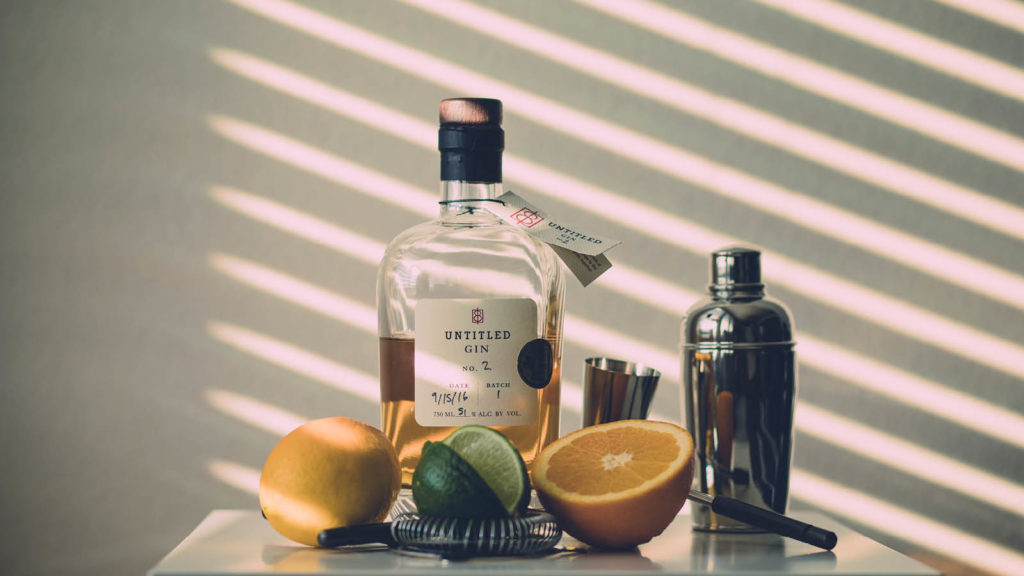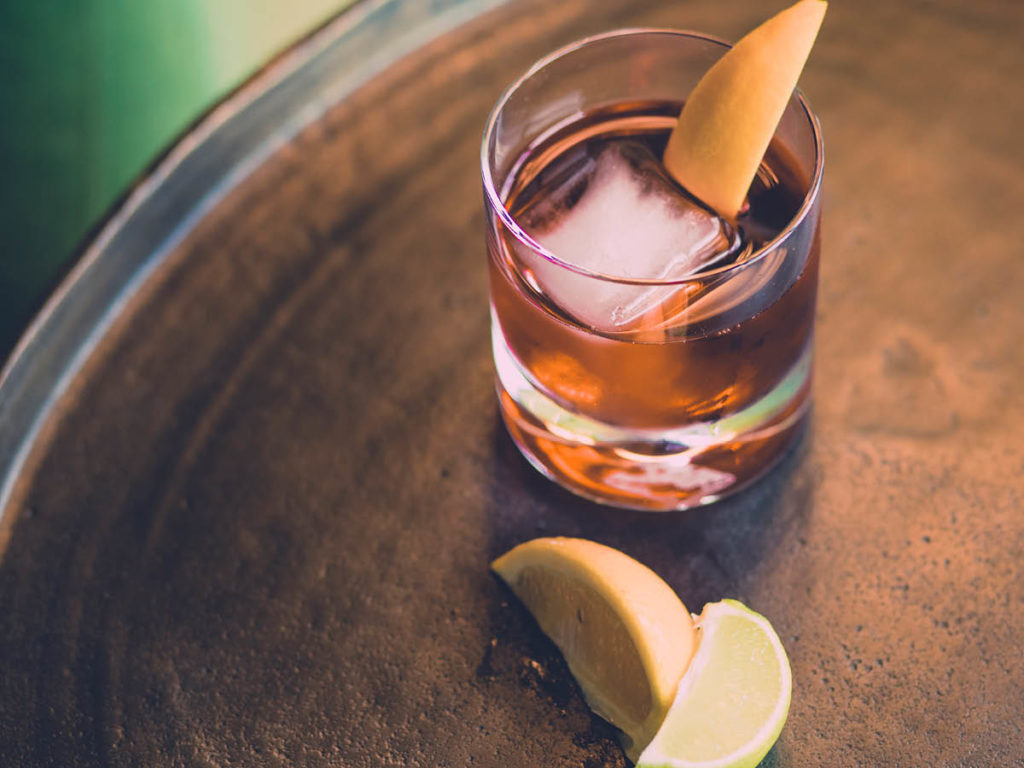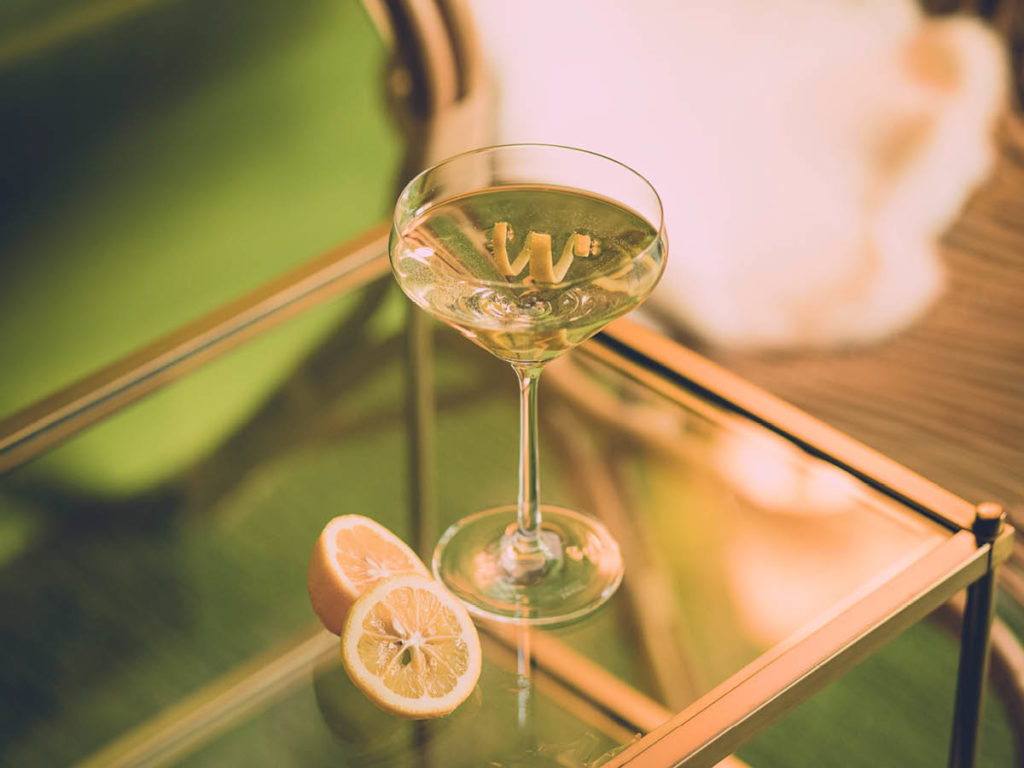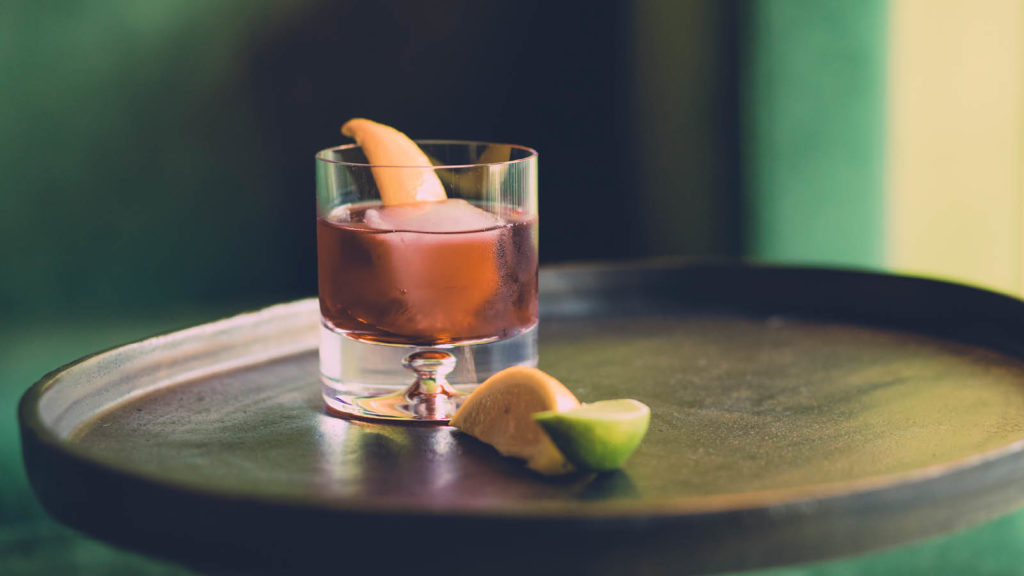Gin is a fragrant, surprisingly complex liquor made from juniper berries and other tasty botanicals. It’s the primary ingredient in your grandma’s summer G&Ts, the stuff you never touched in college (unless it was hidden in one of those deceptively toxic Long Island iced teas), and the origin of the phrase “Dutch courage,” as the Dutch army used to drown their fears in genever before going to battle in the 17th century.
Gin is also one of the most versatile types of booze currently on the market. It plays well with a variety of mixers and, if balanced correctly in your cocktail of choice, appeals to a lot of different palates.
But what is gin, really?
A Quick Shot:
- Proof: 90
- Calories Per Ounce: 74
- Big-Name Brands: Bombay, Seagram’s, Beefeater, Tanqueray, Gordon’s
- Classic Cocktails: Martini, Gin & Tonic, Negroni, Tom Collins, French 75, Singapore Sling
- Famous Song: Gin and Juice, Snoop Dogg
- Did You Know? Gin is the only major type of liquor that is almost never consumed on its own (even martinis are generally mixed with vermouth).

A Brief History of Gin
Many people point to the recorded consumption of gin, or genever, in Holland in the 1600s as proof that the spirit is Dutch in origin, but some experts aren’t so sure. What we do know is that there are literary references to gin that date as far back as the 13th century. Production didn’t pick up until some 400 years later, though, when distilleries in and around Holland started pumping out their botanically infused concoctions as cures for everything from kidney woes to tummy upsets.
Soon, gin spread to England, where it quickly become a popular – and more affordable – alternative to brandy, an imported drink that was heavily taxed. Gin was produced locally using low-quality, castoff ingredients, and that made it easy to find and cheap to buy. At one point in the mid-18th century, there were about 15,000 drinking establishments in London; more than half those were dedicated to the sale of gin. Over time, gin become synonymous with overdrinking and rough, rowdy behavior, a negative connotation that has never quite faded away.
At one point in the mid-18th century, there were about 15,000 drinking establishments in London; more than half those were dedicated to the sale of gin.
As British and Dutch explorers traveled to the globe, so did gin, eventually arriving in tropical locales where it was used to mask the bitterness of anti-malarial medicine made using quinine and carbonated water. The resulting bubbly concoction was the original gin and tonic.
Production, Taste, and Trends
Gin is made using a base liquor of fermented barley and/or other grains. That mash is then distilled in either a pot of column still. That first distillation creates a clear, fairly neutral alcohol that tastes and looks a lot like vodka, but then the fun begins.

Botanical flavoring is what makes gin gin. Juniper berries are essential, but depending on the maker, gin may also include any or all of the following: citrus peel (lemon, lime, orange, and/or grapefruit), anise, licorice, almond, cinnamon or cassia bark, frankincense, coriander, nutmeg, coriander seed, wild celery, angelica root or seed, orris root, cardamom, cubeb berries, ginger, and grains of paradise.
This incredible array of flavoring agents results in an aromatic, complex, and downright tasty product that often comes across as a blend of Christmas tree, fruit, and flowers. There are also newer gins, like Hendrick’s, that lay off the juniper component (thereby scuttling that Christmas tree comparison) and instead rely on other additives like cucumber to create unique flavor profiles.
London dry gin is the most common type and it tends to be dry and citrus-driven, while Plymouth gin is sweeter with a touch of earth.
Keep in mind that there are different styles of gin as well. For instance, London dry gin is the most common type and it tends to be dry and citrus-driven, while Plymouth gin is sweeter with a touch of earth. There are even flavored gins on the market now; sloe gin is the most recognizable, and it includes a berry note from sloe drupes.
Try It: Three Gin Recipes
There are hundreds of cocktail recipes that give gin a starring or support role. Here are a couple to try:
James Bond’s Vesper
People always remember Bond’s famous order of “a medium-dry martini, lemon peel. Shaken, not stirred,” but it’s the recipe in author Ian Fleming’s 1953 novel Casino Royale that is most interesting: “Three measures of Gordon’s, one of vodka, half a measure of Kina Lillet. Shake it very well until it’s ice-cold, then add a large thin slice of lemon peel.” That, friends, is a Vesper.

- 1 ounce dry gin
- 1 ounce vodka
- ½ ounce Lillet
- Strip of lemon peel
Combine all ingredients in a shaker filled with ice. Shake to combine, then strain into a chilled martini glass. Squeeze and drop the lemon peel. Serve.
Negroni
Traditional yet exotic and undoubtedly elegant, the Negroni is a robust drink that’s perfect for sipping before or after dinner.

- 1 ounce dry gin
- 1 ounce sweet vermouth
- 1 ounce Campari
- Strip of orange peel
Stir together first three ingredients in a shaker filled with ice. Stir or shake until combined, then strain into a martini glass. Twist and drop the orange peel. Serve.
French 75
Your typical flute of bubbly gets a 90-proof boost with the addition of gin in this cocktail named after a gun popular during World War I. Despite the battle-inspired moniker, this is a drink that feels distinctly celebratory.

- 2 ounces gin
- 1 ounce fresh lemon juice
- 2 teaspoons of sugar or ¾ ounce simple syrup
- Champagne or other sparkling wine
- Thin strip of lemon peel
Combine the first three ingredients in a champagne flute, then top off with sparkling wine. Garnish with the lemon peel and serve. Note: both lemon juice and sugar/simple syrup can be adjusted to taste.

